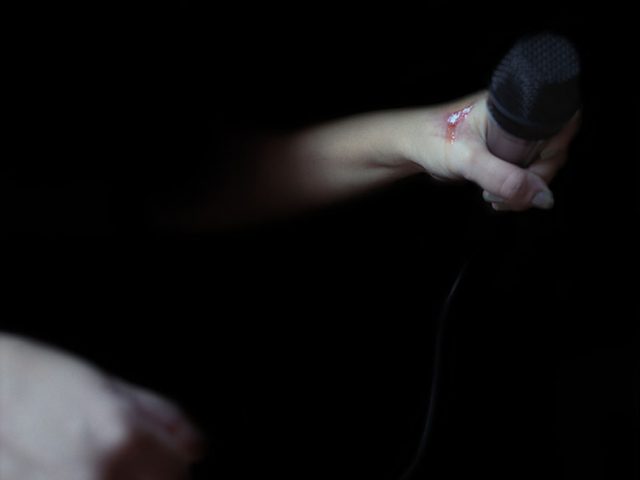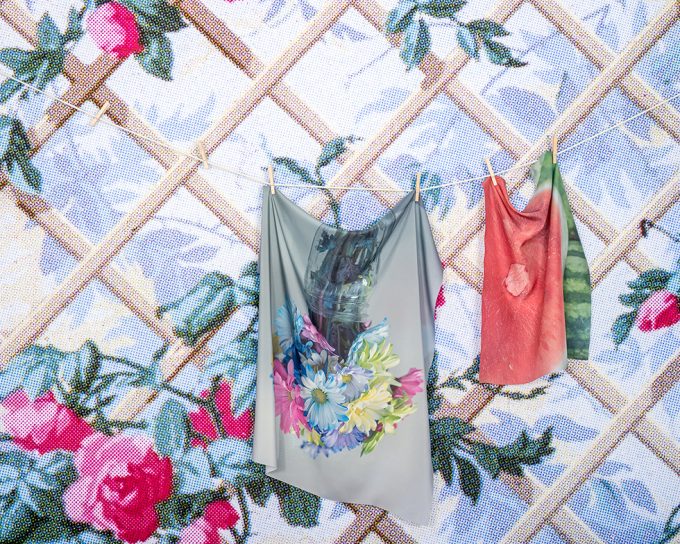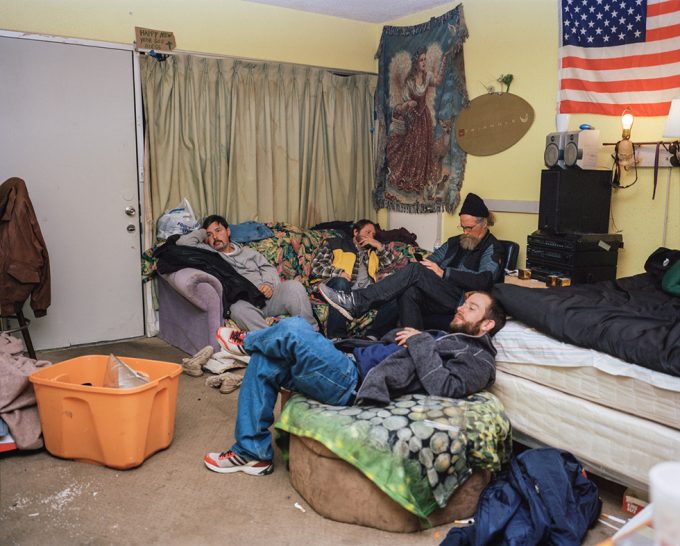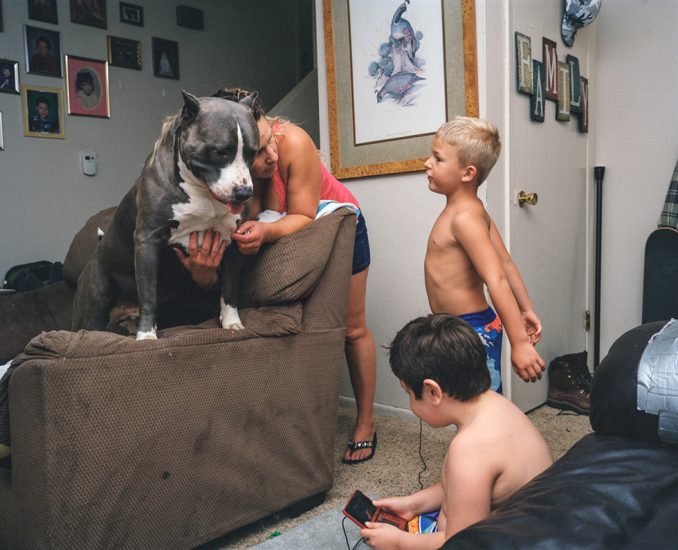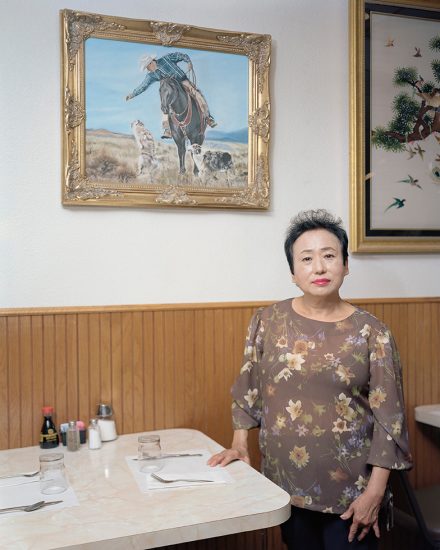June 13 – 21, 2019
Rhode Island School of Design 2019 MFA Photography Show
Opening reception:
Thursday, June 13, 2019
6:00 – 8:00 p.m.
ClampArt is pleased to present an exhibition of the work created by the 2019 graduates of the RISD MFA Photography Program: Dylan Everett, Stephen Foster, Shterna Goldbloom, Viktor Hubner, Izabela Jurcewicz, Rachael McArthur, Michelle Peters, Armando Zamora, and Andong Zheng.
Writer and educator Serge Shea observes:
“Tear, rip, cut, divide, slice, cleave, slash, rupture, sever, rift, chop are all acts of separation. In math we use addition, at home glue, in welding a bead, in sewing a stitch, in engineering a bridge to connect, patch, fix, attach, join, append, bond, fuse, and mend.
“I once sliced the edge of my palm while cutting through a frozen bagel. It was a new, machine-sharpened knife; the bagel was stiff with freezer burn. My hand required seven stitches. The doctor was older and out of practice. His hands had protruding veins and a slight shake. When he finished tying off the final stitch, the line was crooked. It healed but a scar from the injury and the stitches remain.
“’In Close Range’ features nine graduates of the Photography MFA program at the Rhode Island School of Design (RISD), who use photography in a process of mending. Their cameras act as the catgut pulling two, or more, tissues together to create one. This is neither an easy nor clean practice. It’s not as simple as sewing and, at times, it can be messy and unpredictable. This is of course only a metaphor. They are not medical professionals. They are artists.
“Viewed through this metaphor, there are a few who favor a surgeon’s precision. Dylan Everett falls into this category. No trace is visible; like a plastic surgeon, scarring is the enemy. Everett’s images play with the viewer’s sense of space and sometimes read as actual surfaces (or is that a corner?). Even the content refers to the flatness of the decorative: flowers (lots of them), wallpaper, and patterns. Everett’s images are a controlled process of lighting, construction, photographing, and re-photographing. It is hard to decipher what is aesthetic and what is content; what is two- or three-dimensional. You need to look closely.
“Another artist, Rachael McArthur applies a certain care and exactness selecting specific spaces, such as love hotels, which become stages for her narratives. Blanche Dumont (McArthur’s alter ego) is usually at the center of these constructions. They emphasize various desires that meld sex, pain, toys, and role-playing. The viewer is voyeur as they peek through the doorway or window as desire and the roles of author, participant, and power are explored.
“Stephen Foster and Andong Zheng are practiced at suturing. They are not fixing small accidents; they are working to repair culture and identities. Zheng excavates the American west for historical evidence of early Chinese laborers who settled in America. His images are evidence that these cultures are intertwined, existed, and still exist. His camera records this evidence to say look, this history exists; it is here, here, here, and here.
“Foster’s work investigates a deep wound that forms American society, politics, and culture. Foster presents videos of intimate rituals that are part of the American black experience. These documents and creations make up a larger body of work that unthreads and unravels oppression in America—from the inner workings of the incarceration system to stories of those who have experienced this system.
“Shterna Goldbloom’s and Izabela Jurcewicz’s work has no intention of hiding scars. They are interested in the very visibility and existence of the scar. Goldbloom collects LGBTQIA individuals’ images and voices, specifically those who because of their sexuality or gender are at odds with their ultra-orthodox Jewish communities. By including multiple voices and stories, the complexity and diversity of these individual experiences is deepened and woven together into a new document that is archive, instruction, and community.
“Jurcewicz’s camera captures the debriding of a wound. Her debriding consists of restaging and reenacting personal traumatic experiences. For Jurcewicz, the re-staging of traumas offers a way to re-write the experience (lifting the scab, inspecting it) and becomes an act of healing. Her camera and process become tools of alternative healing.
“Michelle Peters and Armando Zamora also mine themselves and their personal histories for content. Peters constructs images that are poetic and rich with myth, and at the same time foreboding. Distinct and symbolic in her use of light and dark; they become their own subjects. Their richness is so well balanced that it is hard to know if the light is swallowing the darkness or if the darkness is swallowing the light.
“Exploring a sense of spirituality, Zamora melds performance and narrative. Part record of rituals inspired by psychomagic and part spiritual stories, Zamora’s images play with the viewer’s sense of narrative. The viewer is left with questions as well as inspiration.
“Viktor Hubner’s practice is that of the war medic working in the field. His camera treats the greatest range of subjects. His images are an excerpt of a larger project in which he hitchhiked, crisscrossing the U.S.A. while documenting the people he encountered. When placed together, his images can be appreciated for the expansive divides he tries to mend: geographies, economies, habitations, realities, voices, and stories.
“In their various processes and engagement with the world, these artists share their cameras’ stitching, weaving, and mending on the flat surfaces of the photograph.
All of these artists have been guided in critiques and thesis committee meetings by a rich and diverse group of faculty and guests. Odette England and Brian Ulrich have led the graduate group critique. Students benefited from individual and guest critiques from artists Jill Magid, Paul Mpagi Sepuya, Ina Jang, Alejandro Cartagena, John Edmonds, Curran Hatleberg, Bill Jacobson, Eve Fowler, and Doug DuBois, among others; critics Lucy Gallun and Lyle Rexer; and gallerist Brian Paul Clamp (ClampArt).
All graduates have completed a thesis book, monograph, and a portfolio of prints—now part of the RISD photo archive, which includes work by such former graduates as Bill Burke, Talia Chetrit, Jim Dow, Linda Connor, Emmet Gowin, David Benjamin Sherry, and Francesca Woodman, among many others.
For more information and images please contact Brian Paul Clamp, Principal, or see www.clampart.com. Summer gallery hours are Monday through Friday, 10:00 a.m. to 6:00 p.m. Saturdays are by appointment.










































